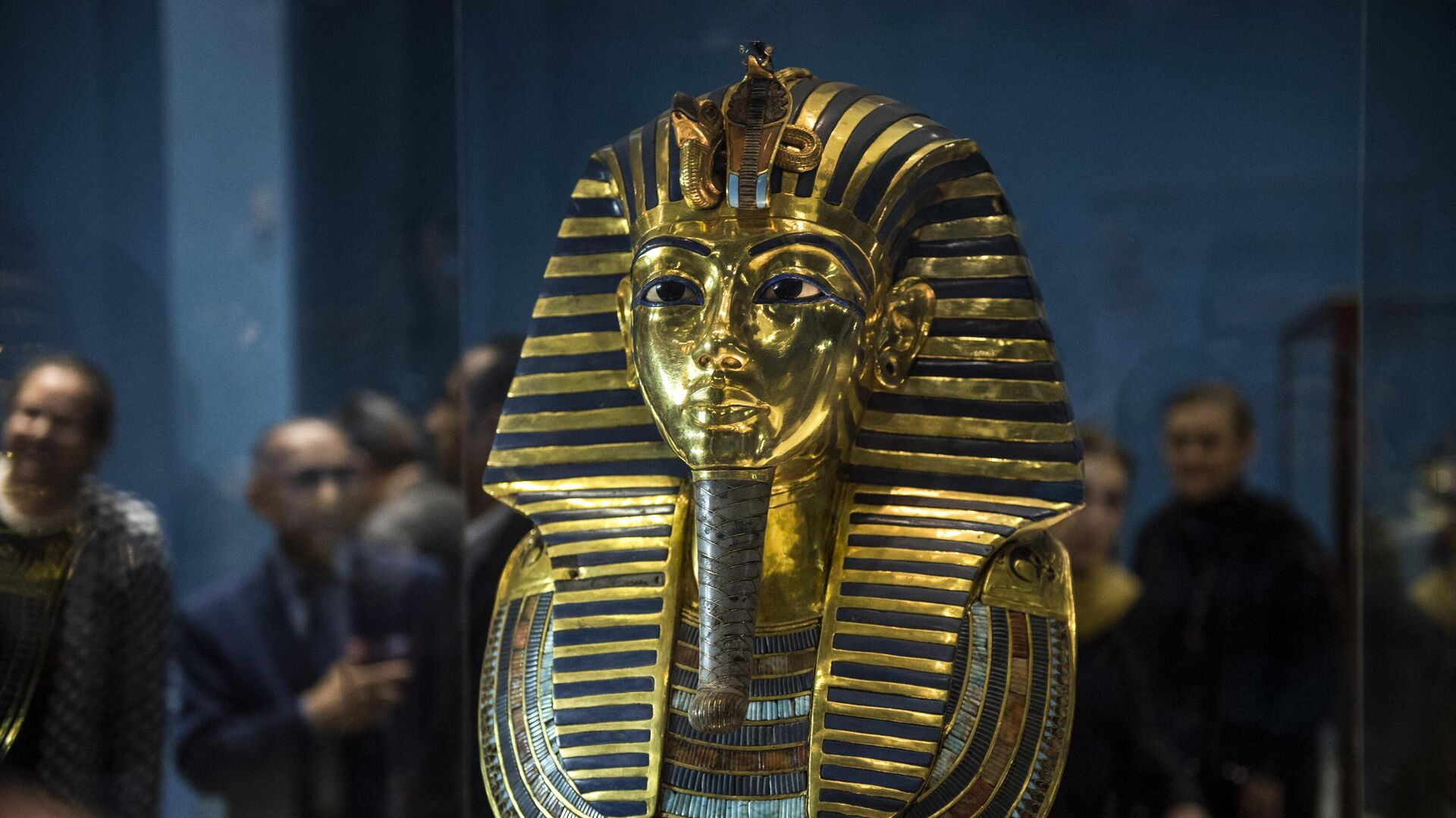https://sputnikglobe.com/20220814/new-evidence-suggests-archaeologist-howard-carter-stole-tutankhamuns-treasure-1099567940.html
New Evidence Suggests Archaeologist Howard Carter Stole Tutankhamun’s Treasure
New Evidence Suggests Archaeologist Howard Carter Stole Tutankhamun’s Treasure
Sputnik International
This year marks the 100th anniversary of the discovery by Carter and his team of the tomb of the boy king, which was filled with thrones, chariots and hundreds... 14.08.2022, Sputnik International
2022-08-14T09:12+0000
2022-08-14T09:12+0000
2023-05-28T15:20+0000
science & tech
treasure
tutankhamun
archaeology
egypt
united kingdom (uk)
https://cdn1.img.sputnikglobe.com/img/07e6/08/0e/1099569128_0:43:3067:1768_1920x0_80_0_0_b7c5fe5dc5519fbcc991c4d07d882e03.jpg
Archaeologist Howard Carter, who discovered Tutankhamun's tomb in 1922, stole some of the treasures found in the 3,300-year-old burial site, a previously unpublished letter sent to the archaeologist by a scholar from his team shows. According to Bob Brier, a leading Egyptologist at Long Island University, rumors have long been rife that Carter stole treasures. “But now there’s no doubt about it," Brier reportedly said. Correspondence between Carter and members of his excavation team remains in a private collection but it will be published by Oxford University Press in Brier's forthcoming book, 'Tutankhamun and the Tomb that Changed the World'. Carter gave British Egyptologist Sir Alan Gardiner, who was enlisted by the archaeologist to translate hieroglyphs found in the tomb, a "whm amulet", used for offerings to the dead, telling him that the amulet had not come from the tomb. Later, Gardiner showed the amulet to Reginald Engelbach, who was the British director of the Egyptian Museum in Cairo at the time, and was told that it had actually come from Tutankhamun's tomb because it matched other examples which all had been made from the same mold.In 1922, Carter and his financial donor, Lord Carnarvon, discovered the tomb of the boy king, filled with thousands of objects, including thrones and chariots, that were believed to be needed in the next world. Within the next decade, Carter supervised the removal of those objects and their transportation down the Nile to Cairo where they were put on display in the Egyptian Museum.
egypt
united kingdom (uk)
Sputnik International
feedback@sputniknews.com
+74956456601
MIA „Rosiya Segodnya“
2022
News
en_EN
Sputnik International
feedback@sputniknews.com
+74956456601
MIA „Rosiya Segodnya“
Sputnik International
feedback@sputniknews.com
+74956456601
MIA „Rosiya Segodnya“
science & tech, treasure, tutankhamun, archaeology, egypt, united kingdom (uk)
science & tech, treasure, tutankhamun, archaeology, egypt, united kingdom (uk)
New Evidence Suggests Archaeologist Howard Carter Stole Tutankhamun’s Treasure
09:12 GMT 14.08.2022 (Updated: 15:20 GMT 28.05.2023) This year marks the 100th anniversary of the discovery by Carter and his team of the tomb of the boy king, which was filled with thrones, chariots and hundreds of other objects Egyptians believed were needed in the next world.
Archaeologist Howard Carter, who discovered Tutankhamun's tomb in 1922, stole some of the treasures found in the 3,300-year-old burial site, a previously unpublished letter sent to the archaeologist by a scholar from his team shows.
According to Bob Brier, a leading Egyptologist at Long Island University, rumors have long been rife that Carter stole treasures. “But now there’s no doubt about it," Brier reportedly said.
Correspondence between Carter and members of his excavation team remains in a private collection but it will be published by Oxford University Press in Brier's forthcoming book, 'Tutankhamun and the Tomb that Changed the World'.
Carter gave British Egyptologist Sir Alan Gardiner, who was enlisted by the archaeologist to translate hieroglyphs found in the tomb, a "whm amulet", used for offerings to the dead, telling him that the amulet had not come from the tomb. Later, Gardiner showed the amulet to Reginald Engelbach, who was the British director of the Egyptian Museum in Cairo at the time, and was told that it had actually come from Tutankhamun's tomb because it matched other examples which all had been made from the same mold.
In 1934, Gardiner wrote to Carter: "The whm amulet you showed me has been undoubtedly stolen from the tomb of Tutankhamun ... I deeply regret having been placed in so awkward a position ... I naturally did not tell Engelbach that I obtained the amulet from you.”
In 1922, Carter and his financial donor, Lord Carnarvon, discovered the tomb of the boy king, filled with thousands of objects, including thrones and chariots, that were believed to be needed in the next world. Within the next decade, Carter supervised the removal of those objects and their transportation down the Nile to Cairo where they were put on display in the Egyptian Museum.



